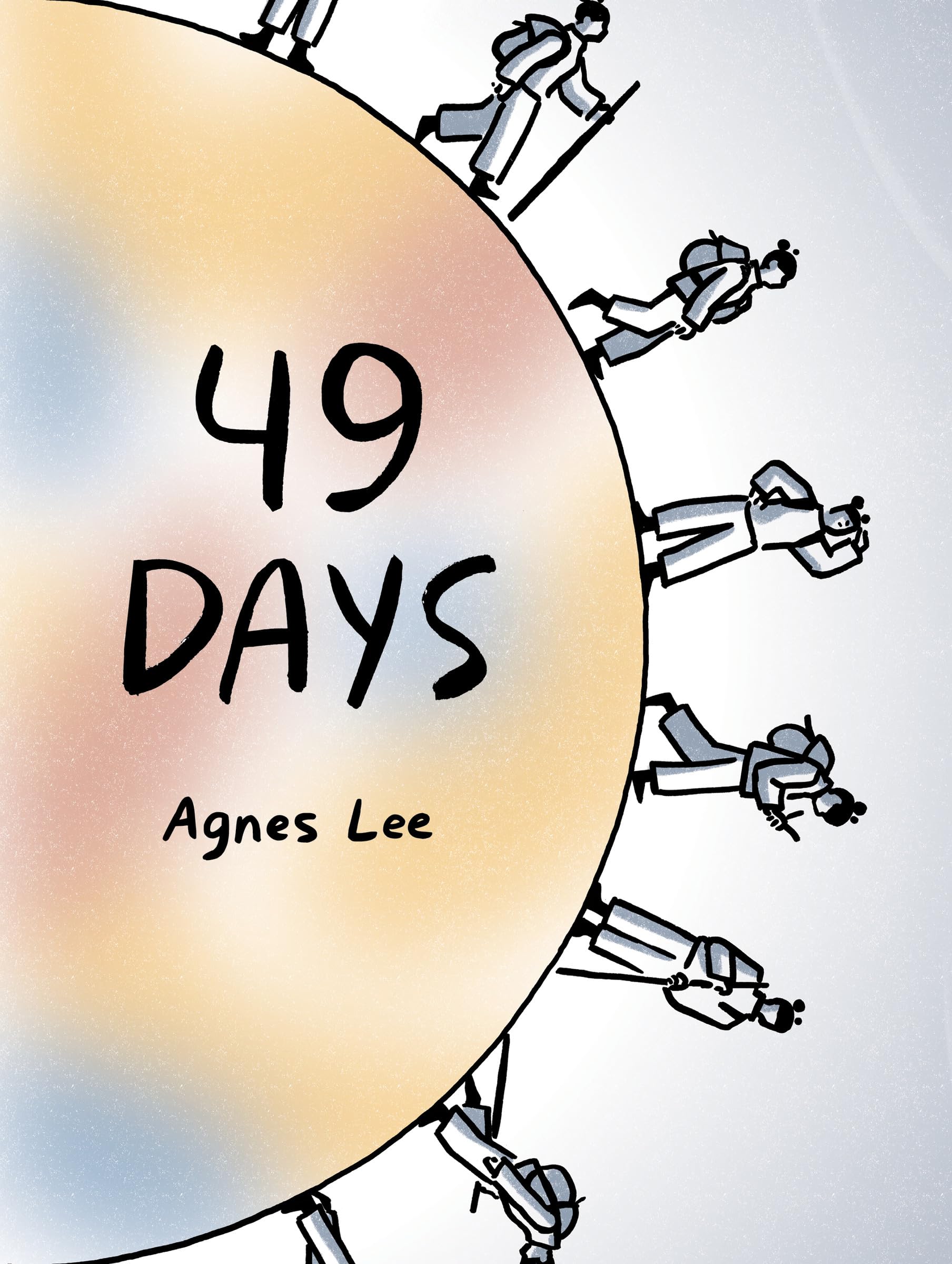49 Days
Written and illustrated by Agnes Lee
March 5, 2024
352 pp.
ISBN: 1646143744
In Agnes Lee’s debut graphic novel, 49 Days, our young protagonist Kit is on a solitary journey in a dreamscape . Crossing the sultry desert, she spots a gigantic tree whose shade beckons her, only to realize upon arrival that the tree barely reaches up to her knees. Feeling defeated, she jumps off the cliff, but she finds herself on top of the cliff again upon opening her eyes. This world she traverses in is run by different laws of physics.
We learn that Kit has been killed in a bus accident and is now in a realm known as Bardo, a 49-day transitional space between death and rebirth according to a Buddhist tradition. In Western societies, the afterlife in literature is heavily influenced by the Judeo-Christian faith, such as Homer’s Odyssey, Dante’s Divine Comedy, and Milton’s Paradise Lost, and we tend to think of our final resting place in binary possibilities, heaven and hell. Buddhist tradition is more forgiving; their binary would be rebirth and Nirvana. In Lee’s novel, we get to glimpse the afterlife from the perspective of another culture, another belief.
Kit’s journey in Bardo is interspersed with two more narrative strands. While the Bardo scenes are abstract and minimalist, drawn with thick strokes and colored in blue, Kit’s recollections of her life on earth are full of exuberance, painted in orange.The scenes of family life after Kit’s death are muted and spare, sketched in pink. Lee mentions in the author’s note that she has used brush, pen, ink, and photoshop for the drawing, with all the dialogue texts hand-written. The color scheme and the personal touch renders the form fitting to the themes.
Kit’s is a Korean American family, living in California, yet they have kept several traditional activities that have defined their parents’ lives, and their shared love is palpable in their usual family activities such as making kimchi with cabbages and gochujang. One endearing scene portrays the silly competition where Kit and her two siblings try to make the biggest pork bossam that fits in their mouths. After Kit’s death, her absence is embodied in a withered plant in her room and their pet, a cat named Tiger, aimlessly lingering in front of the door.
In addition to portraying a young woman’s journey in Bardo, Lee touchingly conveys the ineffable grief that assails the rest of the family members. The author’s inventive use of panel arrangement, color, and paint strokes has created a graphic novel that is highly original and deeply affecting. 49 Days is ultimately a family story, how each member, even the dead one, forges ahead amidst the profound grief in the wake of tragedy. Each comes to realize that they can take comfort in the memories of love shared with one another. Yes, love is enough. “It’s enough,” Kit says as she reaches her destination on the 49th day.
Review by Richard Cho, editing assistance by Charlotte Roh.
Book reviews and author interviews featured on APALAweb.org are reflective of the reviewer and interviewer only and are conducted separately from and independently of APALA and the APALA Literature Awards Committee and juries.

